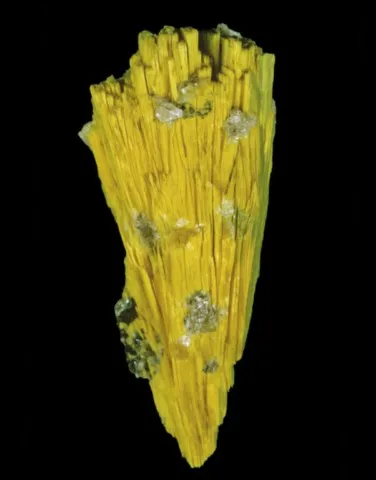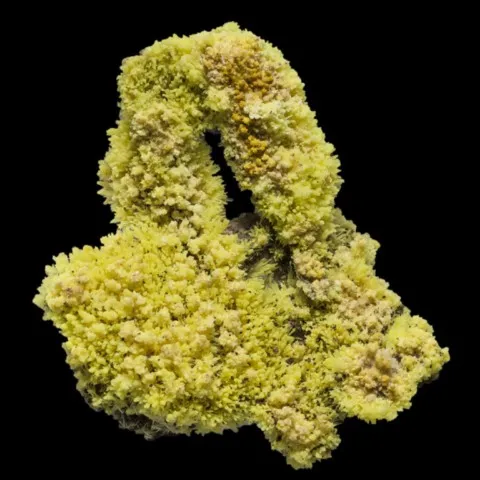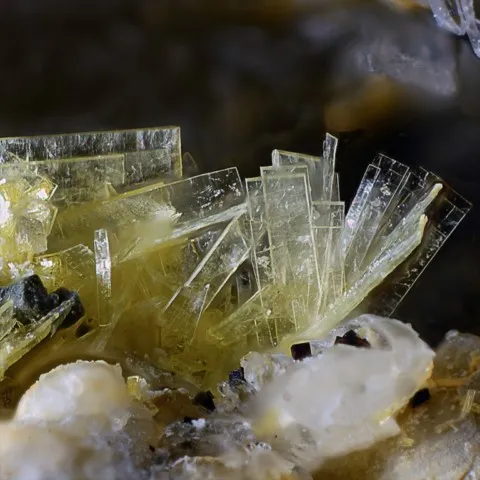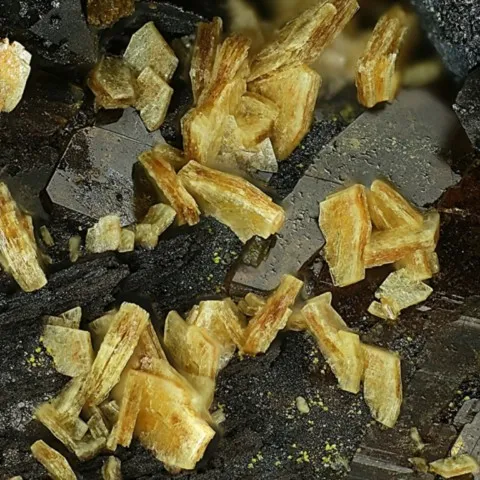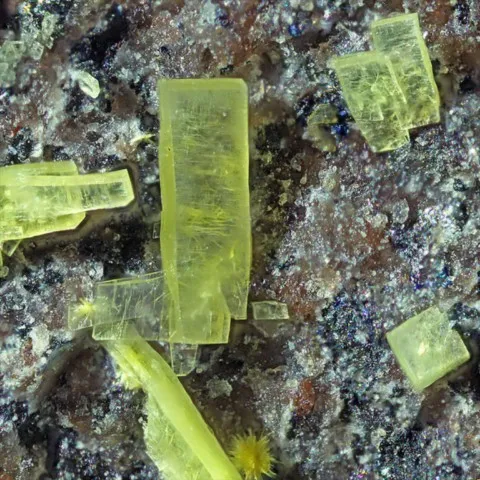NOVACEKITE
Class : Phosphates, arsenates, vanadates
Subclass : Uranyl arsenates
Crystal system : Monoclinic
Chemistry : Mg(UO2)2(AsO4)2 12H2O
Rarity : Rare
Novacekite is an arsenate of uranium and magnesium which is found in the surface oxidation zone of some uranium deposits. It forms a series with its phosphorous equivalent : saltite. It owes its name to the Czech mineralogist Radim Novacek. Novacekite occurs in thick tablets united in subparallel aggregates, often intergrowing with zeunerite. Its color is lemon yellow to yellow-orange and yellow-green.
Main photo : 5 cm Novacekite from Pedra Preta pit, Serra das Éguas, Brumado, Bahia, Brazil © Rock Currier
Novacekite in the World
Twinning
No twins known for this mineral species.
Fakes and treatments
No fakes recorded for this mineral species.
Hardness : 2 to 2.5
Density : 3.25 to 3.7
Fracture : Micaceous
Streak : Pale yellow
TP : Translucent to transparent
RI : 1.543 to 1.578
Birefringence : 0.032
Optical character : Biaxial -
Pleochroism : Visible
Fluorescence : Green to yellow
Solubility : -
Magnetism : NoneRadioactivity : Strong

